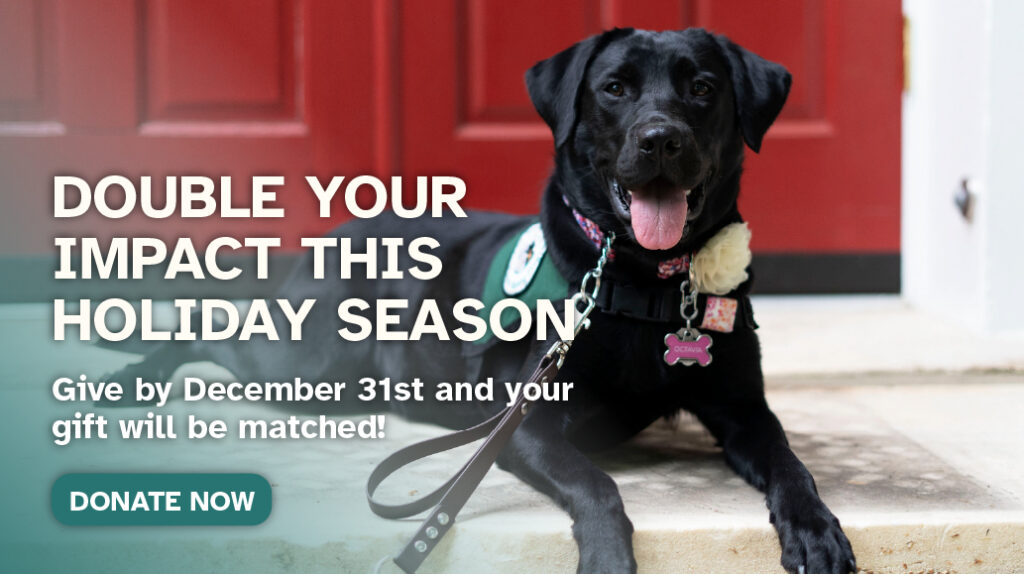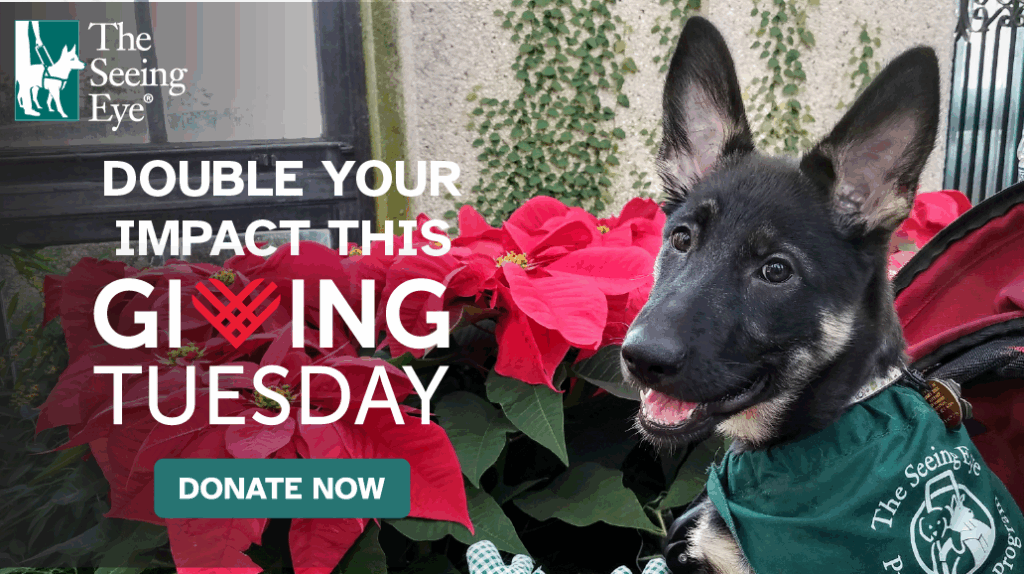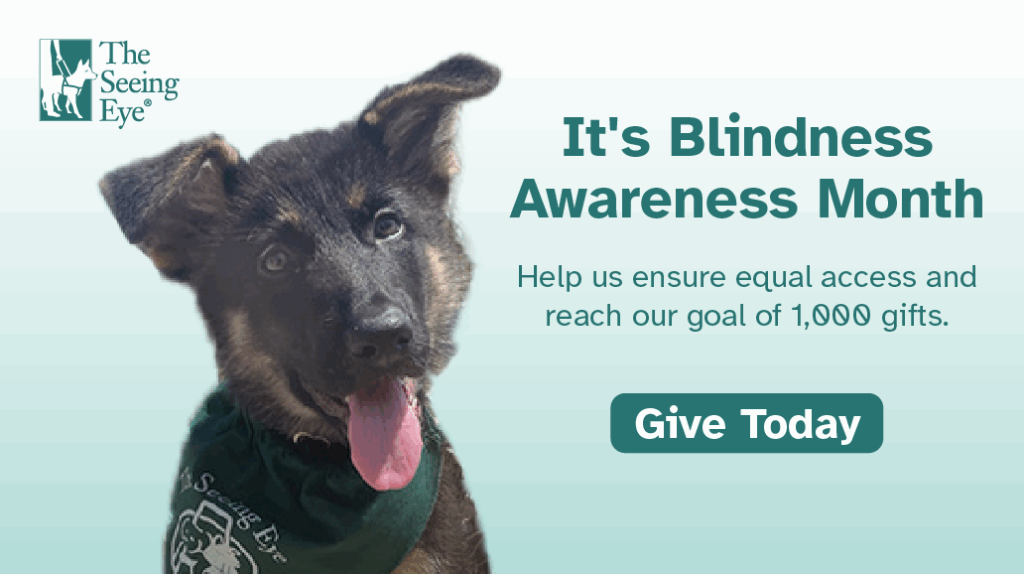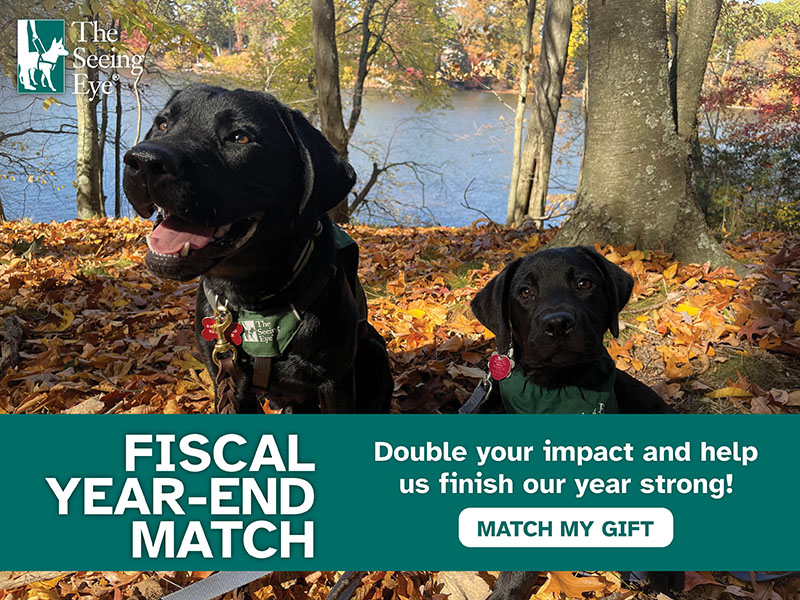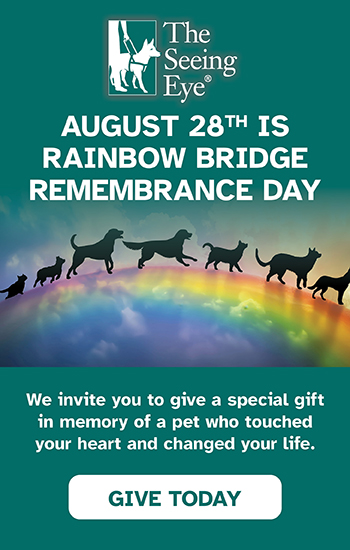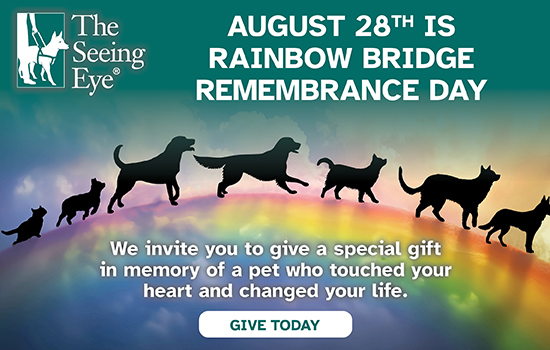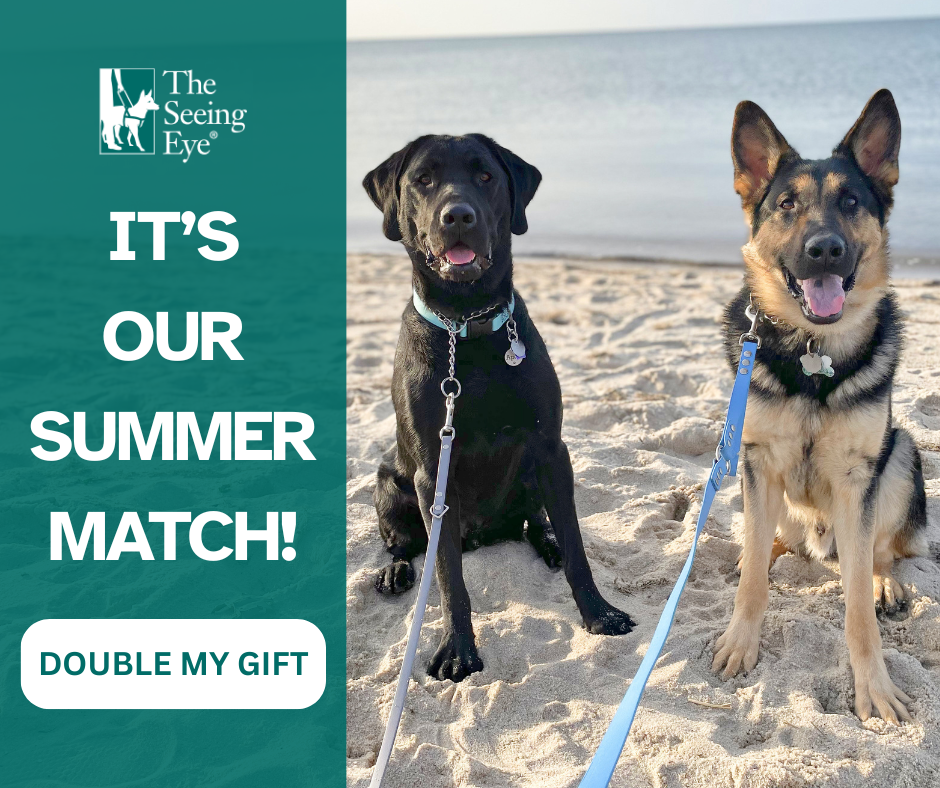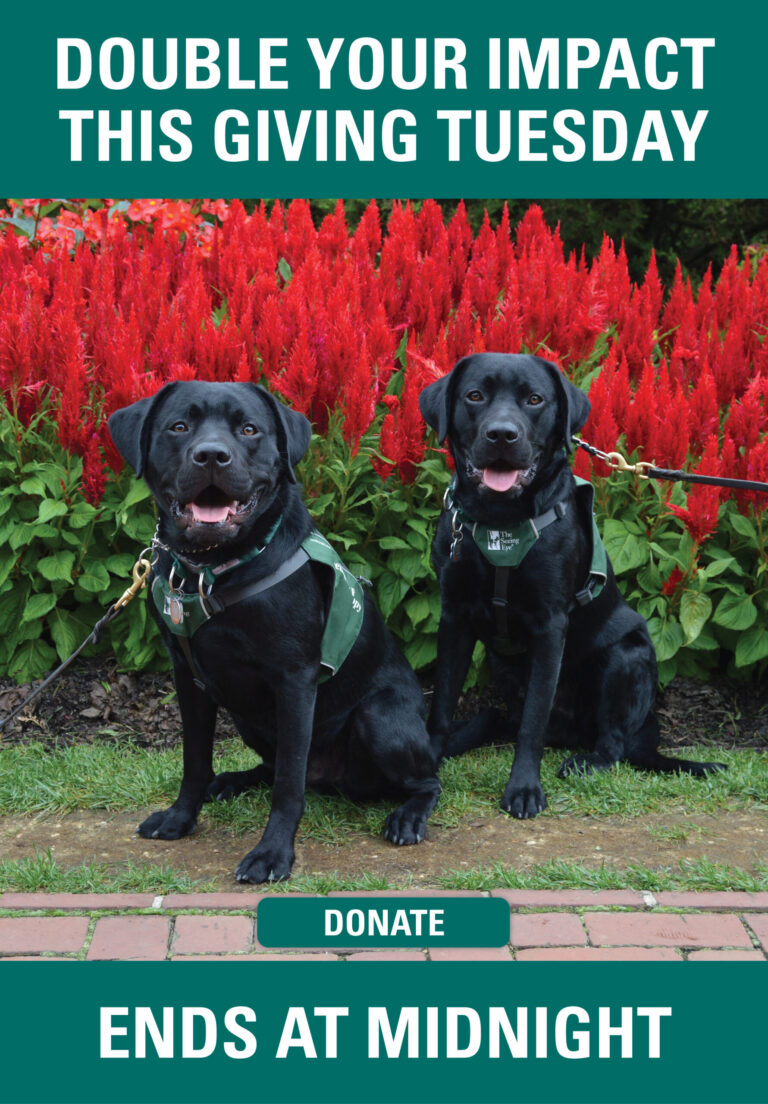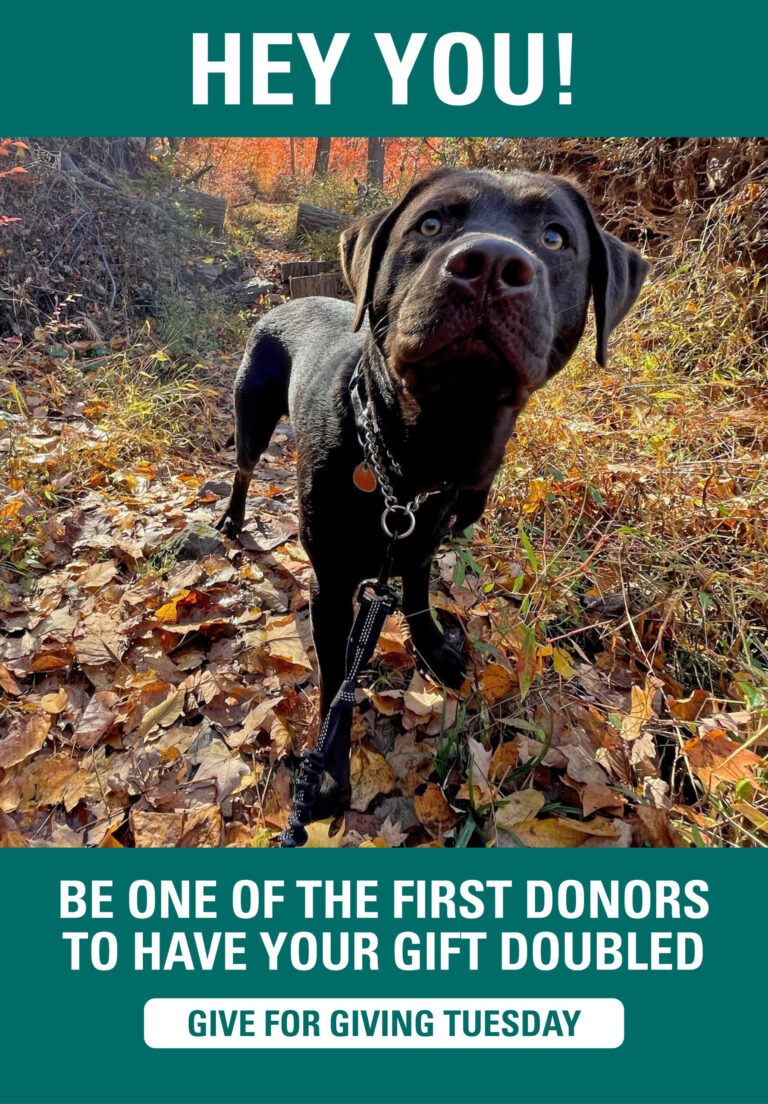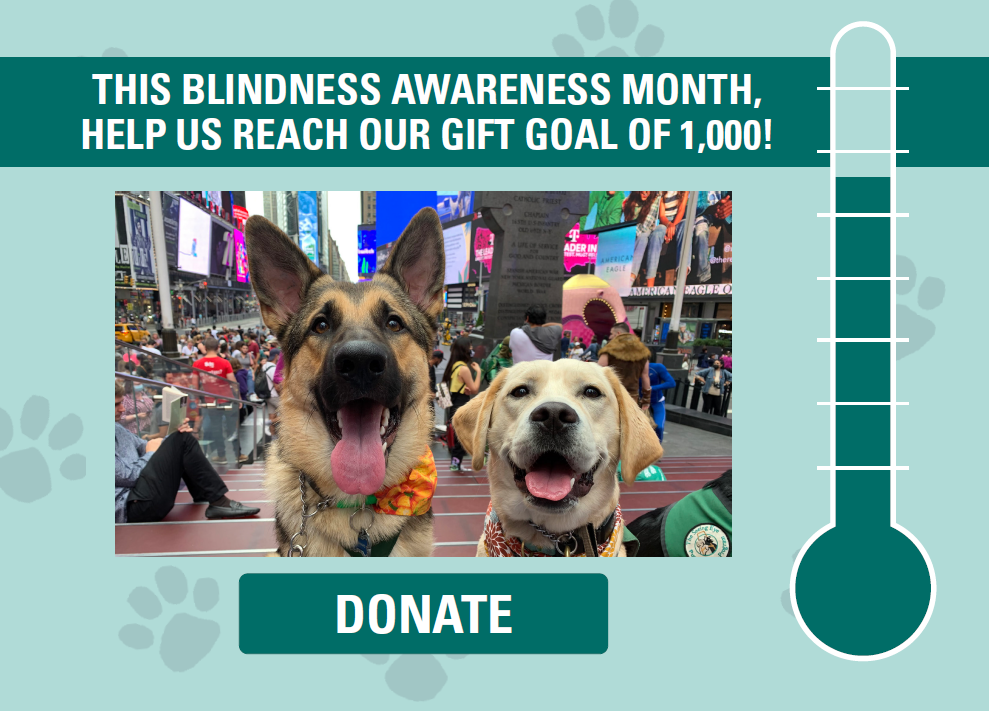Access & Advocacy
Interference & Dog Attacks
Interference & Dog Attacks
The Seeing Eye has been matching people who are blind with Seeing Eye® dogs since 1929, and we are fully committed to the success and safety of every team we create. That is why we continue to raise awareness about a troubling but important topic—interference from other dogs and people. The significance of this threat for guide dog teams must not be underestimated. Even if injury does not result, unprovoked attacks and harassment on a guide dog team can compromise the ability of some guide dogs to continue working safely and effectively and force them to retire prematurely. These incidents can also make it difficult for blind handlers to go about their daily lives without the fear of subsequent attacks and interference with their dogs’ work.
2019 Guide Dog Work Interference Survey
Even though most states now have some type of legislation imposing penalties for harming and interfering with guide dog teams, The Seeing Eye has observed that the problem still persists. In an effort to update our data and gain a more comprehensive understanding of the types of interference guide dog teams are facing while working their dogs, we conducted a survey of our graduates in October 2019. A peer-reviewed paper discussing the full findings of the survey was published in The Journal of Visual Impairment and Blindness in November of 2022 (abstract). For the full, accepted version of the article, follow this link.
2011 Dog Attack & Interference Survey - United States Report:
The 2019 survey would not have been possible without the baseline study The Seeing Eye conducted in 2011 of guide dog handlers in North America to collect data on the frequency, circumstances and effects of attacks and interference by aggressive dogs. The purpose of the study was to confirm anecdotal information indicating that guide dog teams experience a high frequency of attacks and interference, identify possible interventions to help reduce their frequency, and to establish baseline data to assist with future studies. At this time, The Seeing Eye learned that interference from aggressive dogs is a problem that a majority of guide dog handlers have faced.
Use the links below to download a basic text file, PDF or Microsoft Word Document of the report.
- Download The Seeing Eye’s 2011 Dog Attack & Interference Survey as a basic text file
- Download The Seeing Eye’s 2011 Dog Attack & Interference Survey as Adobe PDF
- Download The Seeing Eye’s 2011 Dog Attack & Interference Survey as Microsoft Word Document
When considered together, these two surveys show us that interference with guide dog teams is still a very serious problem that we need to work as a community to address. The Seeing Eye would like to express its deepest gratitude to all who have participated in our surveys and supported us in our efforts to better understand the gravity of this problem. The Seeing Eye works extensively with graduates, state legislators, national consumer groups, other guide dog schools, law enforcement agencies, and animal-related organizations to raise awareness and help address this ongoing issue. We cannot do it alone. We need your help to spread the word. Find some great resources to help educate the public about these issues at: www.GuideDogAtWork.org.
For More Information
Information about protections for guide dog handlers vary by state, province, and territory. For more information, download The Seeing Eye Advocacy App.
If you are having an access issue, please contact our Advocacy & Government Relations Department at 973-539-4425 or email advocacy@seeingeye.org.
